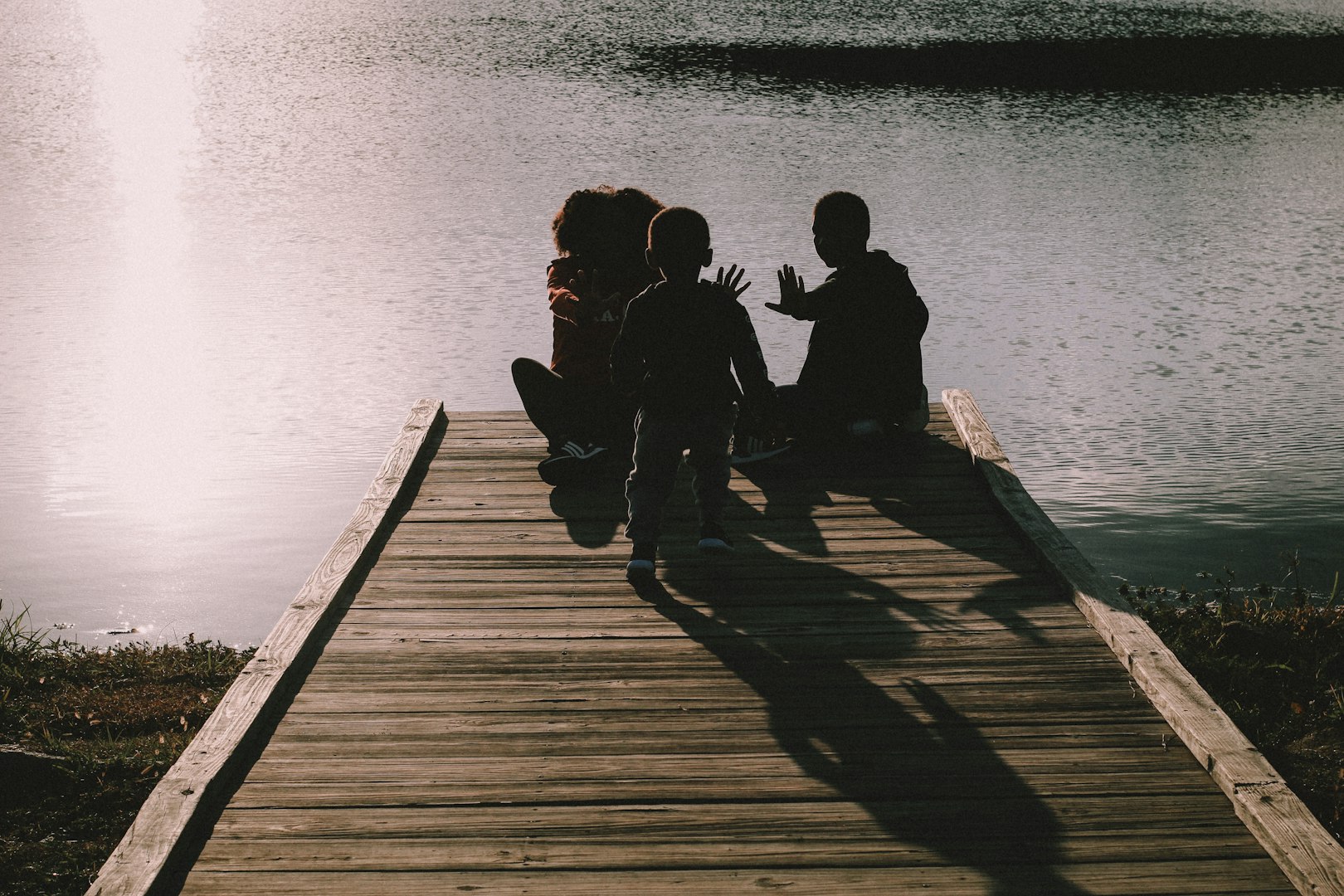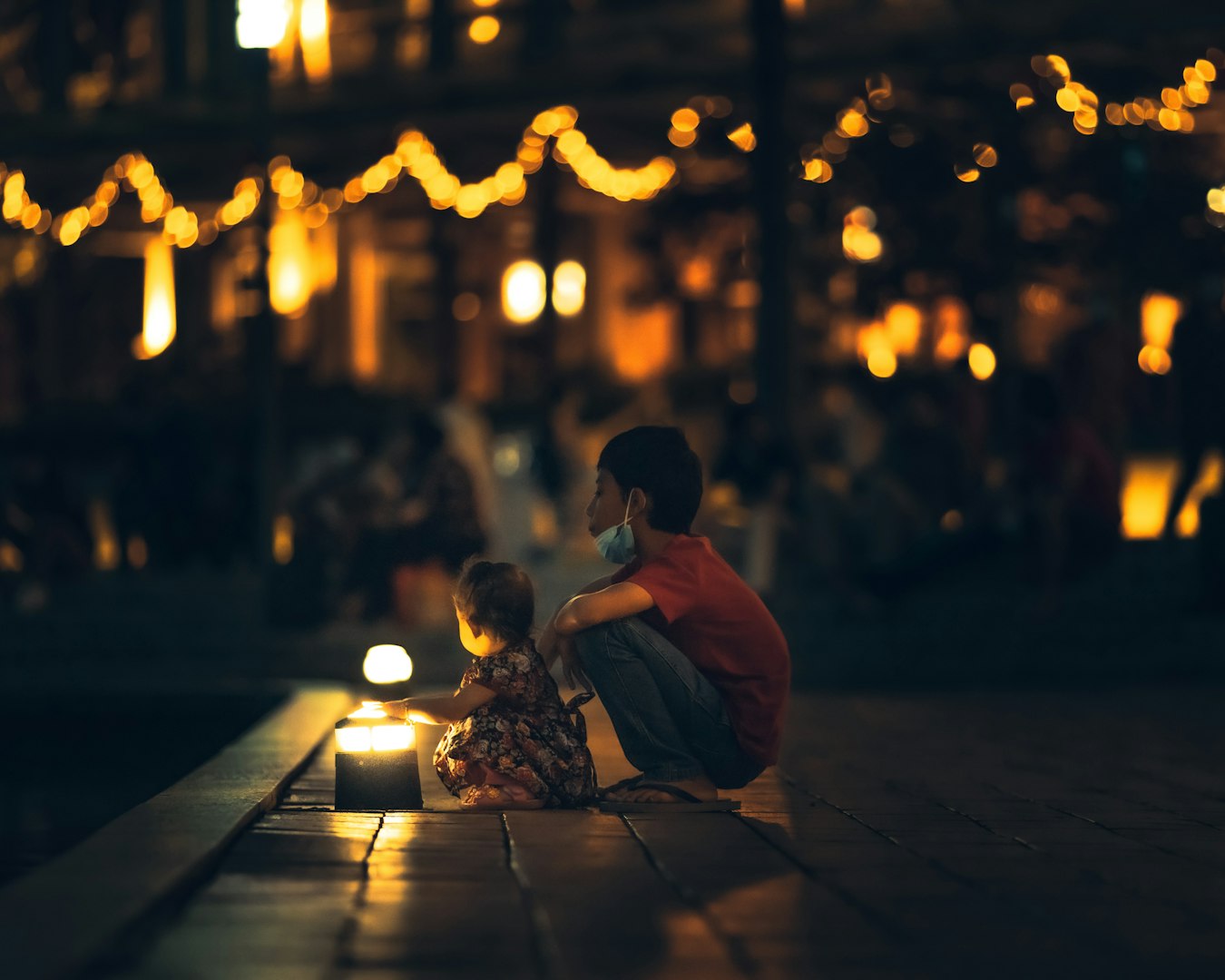
321830704
Superscript
Night Time Adventures
After dark, you can enjoy activities like stargazing, night walks or hikes, playing flashlight games like flashlight tag or a treasure hunt, or hosting a campfire. For unique experiences, consider glow-in-the-dark mini-golf or attending a nighttime event like a concert or festival. Always prioritize safety by bringing a reliable light source and wearing bright clothing to stay visible.
Active & Adventurous:
Stargazing: Find a clear night away from city lights and look up at the stars.
Night Nature Walk: Explore trails to see what wildlife emerges after dark.
Night Cycling or Running: Hit the streets or trails for a different perspective on familiar routes.
Moonlit Walk: Enjoy a walk by the beach or a scenic spot under the moonlight.
Backyard Camping: Pitch a tent and spend the night under the stars in your own yard.
Flashlight Tag: Play a game of tag where the "it" person uses a flashlight.
Glow-in-the-Dark Scavenger Hunt: Hide glowing items and give players flashlights to find them.
Capture the Prize: A game where players use flashlights to find a hidden prize.
Night Swimming: Enjoy a refreshing swim in a pool or lake after the sun goes down.
Campfire: Gather around a campfire for warmth, conversation, and roasting marshmallows.
Ghost Stories: Tell spooky stories around a campfire or in your backyard.
Attend Local Events: Check for night markets, concerts, festivals, or even outdoor movie showings in your area.
Bring a Light Source: Always carry flashlights or headlamps to see where you are going.
Wear Bright Colors: Use brightly colored clothing and reflective materials to be seen by others, especially near roads.
Stay Charged: Keep your cell phone charged in case of an emergency, but don't rely on it as your primary light source.
Know the Moon Phase: A clear, full moon can provide extra light, which is helpful for stargazing or navigating.
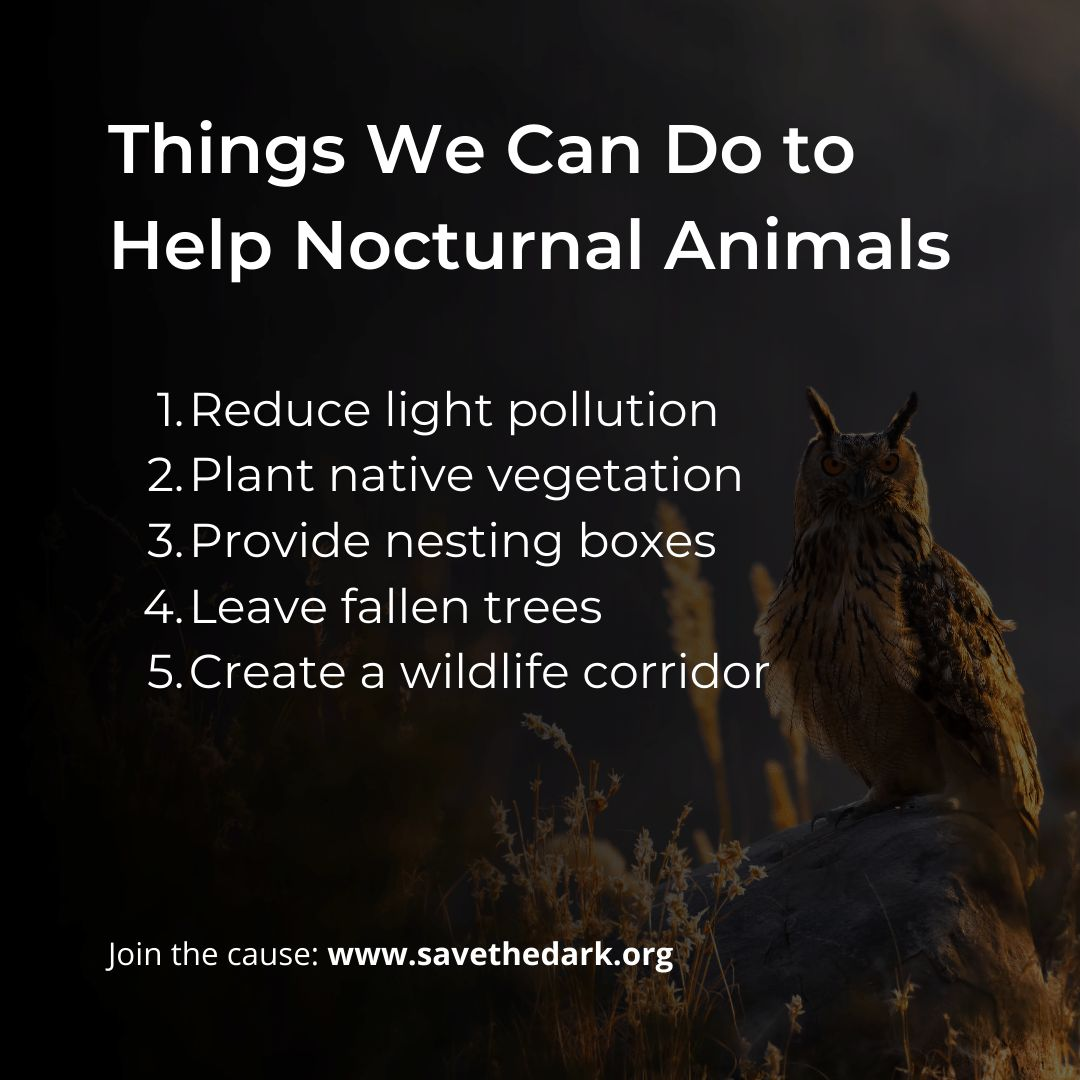
Outdoor things to do with kids at night at home
Fun things at night to do with kids at home don’t need to be restricted to indoors. There’s nothing better than a few outdoor activities if it’s warm enough. Don’t be put off if it’s dark outside – that can be used to your advantage and add another dimension!
Here are some fun things to do with kids at night in the backyard at home.
Backyard Campout
Another fun thing to do at night with kids that love camping. This one is a little more work than the indoor version, but far easier than the real thing!
Pitch a tent and create your own adventure in the backyard. Roast s’mores on a campfire, drink hot chocolate, play games, and tell ghost stories. Flashlights and comfy bedding for a good night’s sleep are a must.
And if it gets too chilly, simply head back inside.
Nighttime Scavenger Hunt
Scavenger hunts are so simple and appeal to kids of all ages, adults too. So are an ideal thing to do at night with kids. They’re even more fun to do in the dark.
Give them a flashlight and a list of things to find and off they go.
Flashlight Tag
This Tag meets Hide and Seek flashlight game is an old favorite. The person with the flashlight is “it” and the aim of the game is to spot the other players hiding in the dark. Once all players are found it is someone else’s turn to be it.
Build a backyard campfire and make S’mores
To me roasting marshmallows and making S’mores is such a treat. If you have a backyard fire pit then brilliant. If not you can use a camping stove or you can even get Smores Kits which come with a burner.
Whichever you go for, the kids will love it!
Cook dinner over a campfire
The joy of cooking on an open fire doesn’t have to be saved for camping trips. Why not cook your dinner over your campfire at home? Grab some hot dogs or make up some kebabs and enjoy some backyard dining.
Backyard Hide and Seek
Add a new element to this favorite backyard game by playing in the dark. Kids will love the excitement of it and the fact that it’s a little bit spooky!
Stargaze in the backyard
Pick a clear night, turn off any lights, put a blanket down, and lie and watch the stars. Inspire your young astrologers by pointing out the constellations, and talking about what they can see in the night sky.
Getting a book on constellations is a great way for children to learn what they are looking for and build enthusiasm.
Backyard movie night
A great way to spend time together as a family on a summer night.
To set up an outdoor movie you’ll need a portable projector and some speakers. If you have a screen then great, otherwise you can use a wall, or hang a plain white sheet instead.
Throw down some rugs, outdoor cushions, and bean bags. Or set up the camping chairs, prepare some special snacks, and settle down for an evening in front of your family’s favorite movie.
FUN GAMES TO PLAY
OUTSIDE IN THE DARK
OUTSIDE
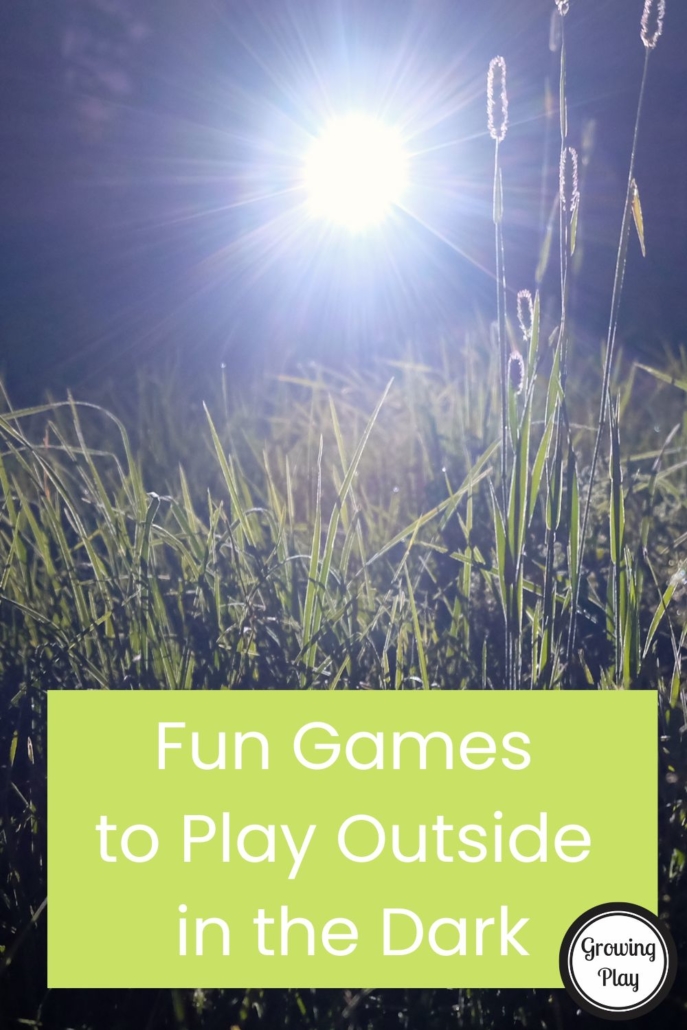
Instead of sitting in front of the television at night, your friends and family can join for fun games to play outside in the dark. You don’t always need sunlight in order to enjoy outdoor activities. Here are some fun games to playoutside in the dark including flashlight tag, ring toss, kick the can, constellation hunt, and many others.
Flashlight Tag
To play this version of tag, give each player a flashlight and have the players get into pairs. Each pair needs to come up with its own special flashlight signal. For example, one long flash followed by two short flashes can be a signal.
Have each pair split up and go to opposite ends of your backyard. Make sure your backyard is dark enough that the team members cannot see each other. Each player must try to find and tag his partner by using the flashlight signal. The first pair to accomplish this wins the game.
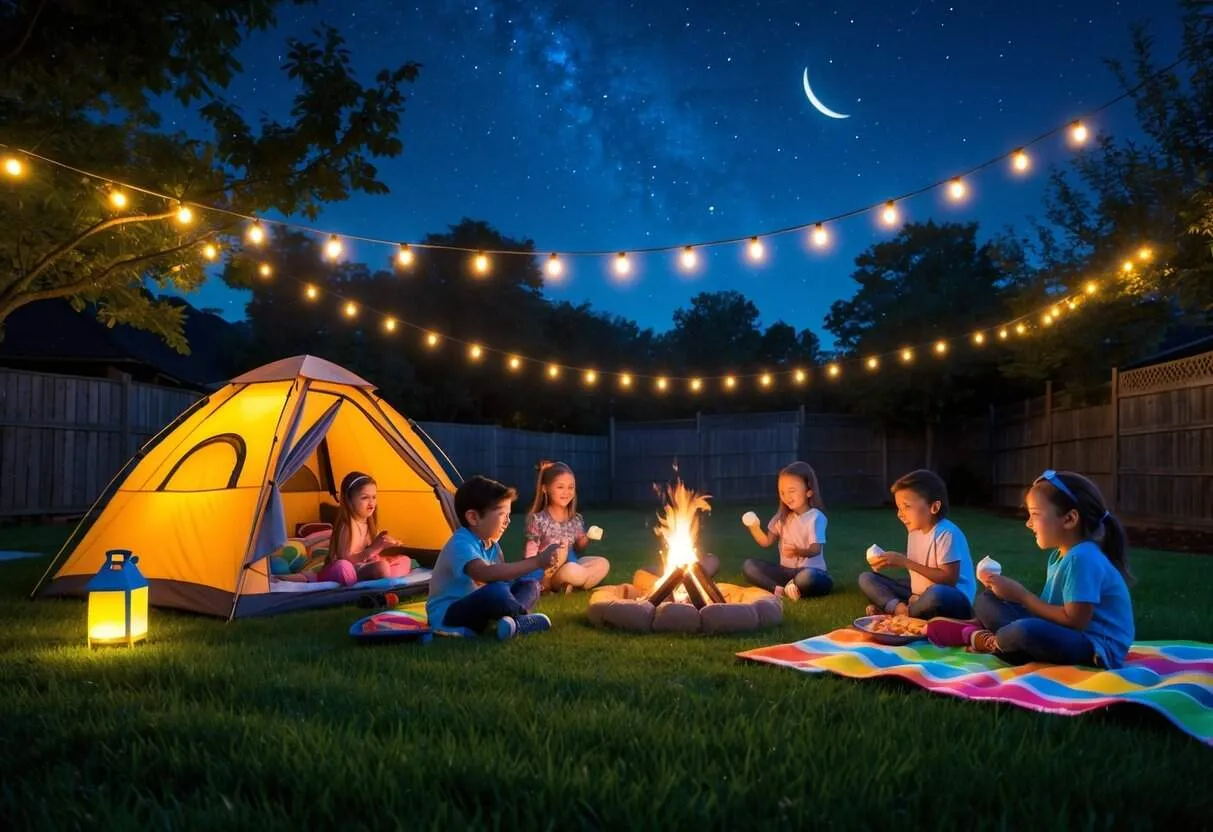
Camping Games and Activities
Outdoor activities have many benefits and are a game-changer for burning off energy, including promoting physical activity making memories, and just giving us all a little break from the chaos inside.
Every family’s got their own vibe, so here are playful, easy ideas anyone can create and try. Let’s make outdoor time a little less stressful (and a lot more fun) for all of us!
Ring Toss Games to Play Outside in the Dark
To play ring toss at night, you need to get a bunch of glow-in-the-dark necklaces. Give all the players an equal number of necklaces. You also need a skinny flashlight for this game. Push the bottom of the flashlight into the ground so that it is shining upward. Have all the players take turns tossing their necklaces at the flashlight. The player who gets the most necklaces around the flashlight is the winner.
No flashlight? No problem. Fill up a recycled one-liter bottle with water, toss a glow stick in it and seal it up. Use this to toss your rings around after dark.
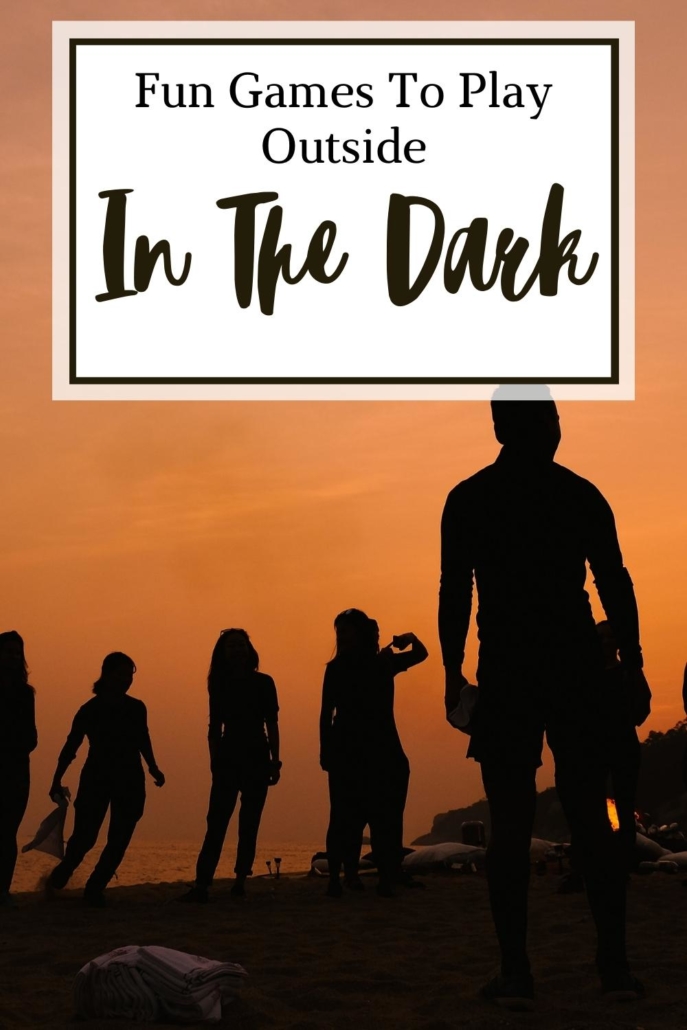
Kick the Can
To start this classic game, place an empty can on the ground in a well-lighted area. Light up that can by using a recycled peanut butter jar with a glow stick in it! Pick one person to be “it.” Have that person count to 30 while other players run off into the darkness and hide.
If the “it” person finds someone, he must race back to the can and tag it while saying that player’s name. However, if the other player reaches the can first and kicks it, then she can run and hide again. In addition, a player can kick the can at any time to free players who have been found. The game ends when “it” tags out everyone. The first player tagged is the next person to be “it.”
Constellation Hunt
You can have fun and learn something while playing constellation hunt. Before starting this game, players need to do some research. You can spend a few minutes studying constellations in an astronomy book or on the internet prior to the game.
When all the players are ready, give them pads of paper and pencils. Have everyone go into the backyard and look up at the sky. Players need to write down all the constellations that they can find. The player who finds the most constellations in 10 minutes is the winner. However, that player needs to point out the constellations to confirm his victory.
Museum After Dark
Museum After Dark is a good game to play when your outdoor space is limited. Choose one player to be the “museum guide” and give this person a flashlight. The rest of the players spread out in the playing space and strike an interesting pose as if they are pieces of art.
The museum guide then goes to each piece of “art” and looks it over with her flashlight, describing the piece of “art” in funny ways, but without touching it. If the museum guide can make the “art” laugh or move, the “art” becomes the new museum guide.
Sleeping Pirate
Sleeping Pirate is a good game to teach listening skills and stealthiness. Choose one player to be the “pirate” and give him a flashlight. You’ll also need a ball, bucket, or another object to represent the “treasure.”
The pirate sits at one end of the playing area, with the “treasure” sitting in front of him or her. The other players line up on the other end of the playing area. To play, the players each try to sneak up and steal the “treasure” without tipping off the pirate. If the pirate hears a sound, he shines the flashlight in that direction. If the flashlight beam tags a player, he must go back to the starting line. The first player to nab the treasure without alerting the pirate becomes the new pirate.
Glow-in-the-Dark Freeze Tag Games to Play Outside in the Dark
This version of freeze tag requires to glow sticks bracelets or necklaces. Children wear glowing bracelets or necklaces as they race around. The person designated as “it” wears a glow stick on her head, or several glow sticks to make her stand out from the others. If the “it” person tags you, you must freeze, until another team member touches you and sets you free again.
Hide and Seek
Darkness offers plenty of places to hide, including in plain sight. Give children flashlights to help guide their way. They can also use flashlights to signal their location if they get tired of hiding or want to tease the person trying to find them.
Capture the Flag
This classic outdoor game is made even more fun and challenging in the dark. Divide players into two teams, and give each team a glow stick wrapped in a colored flag to illuminate the flag slightly.
Divide the playing area into two sides. If possible, mark the boundary with cones, a rope, or a similar object. If you have enough resources, have each player wear a scarf or bandanna of the same color as their flag so everyone knows who is on what team.
The object of the game is to infiltrate the opposing team’s side of the field of play and capture their flag. Anyone who is tagged while on the opposing team’s side must stay in “prison” until the game is over. The game ends when a player successfully captures a flag and makes it back to her side of the field or when all members of a team have been captured and are in prison.
Capture the Treasure
Mark the “castle” with lanterns or candles in holders. Place the “treasure” in the middle of this area. You can decorate the treasure with glow sticks. Divide children into teams. One team defends the castle while the other tries to sneak up and capture the treasure. After one team is successful, the teams switch roles.
Treasure Hunt
Send kids on a hunt for treasure in the dark. They can use flashlights to search in trees, behind bushes, and against fences and house walls. For extra fun, wrap the treasures in the glow-in-the-dark paper, use glow-in-the-dark paint on rocks, or write clues in a glow-in-the-dark marker.
Try putting glow sticks in yellow plastic easter eggs to create your treasure and hide them around the yard.
Statues
For this game, you’ll only need one flashlight. Pick one player to be “it.” That player takes a flashlight, closes his eyes, and counts to 30 while all the other players scatter around the field or yard. Once the player with the flashlight is ready, he goes around shining the flashlight on the players. Players caught with the light must be standing still like statues, otherwise, they are out. The last player remaining in the game wins and becomes “it.”
Summer is a great time to head outside and play. Even after the sun goes down, the fun doesn’t have to stop. Warm summer nights make playing in the dark as much fun as playing in the light–and there’s no risk of sunburn. To fill your summer nights with fun, plan a few fun games to play outside in the dark to keep your family or campers entertained.
MORE FUN OUTDOOR GAMES
Going for Night Walks
Winter is a time of long nights which provides the ideal opportunity to develop your latent capacity for nocturnal sensing. So what do I mean by “nocturnal sensing”? Have you ever noticed how being out in the dark, you instantly become more tuned with listening and being aware of your senses at a deeper level? The night has a special way of waking up ancient feelings and instincts:
Your peripheral vision sharpens up like an owl.
You begin to hear subtle sounds from longer distances.
You experience that primal taste of fear/adrenaline which brings you fully into the present moment.
You’re suddenly more conscious of your sense of balance, and how the ground feels beneath your feet.
You get quiet inside as navigating the dark environment requires a higher degree of focus, awareness & concentration.
Overall, what this means is the increased sensory demands of being outside at night are like a meditation aid to help you access deeper states of connection with nature.
And interestingly, you’ll also discover that even though we’re in the dark time of year, winter nights can actually be surprisingly bright. The winter moons rise higher in the sky, and with all the leaves off the trees, more light penetrates to the ground. If you have snow, it’s pretty amazing how much light gets reflected back. Definitely try some slow night walks and see how it feels!
10 Ways to Explore Nature at Night
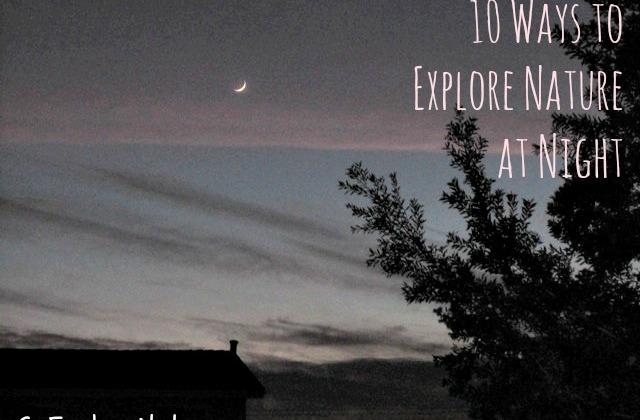
Summer is full of warm days that blend right into slightly cooler evenings – most of which are perfect for being outside. Combine that with less pressure to get the kids to bed at a certain time and you’ve got a winning combination. Time to head outside and explore! A few tips for exploring nature at night with kids: Keep it short and simple. Since our kids are usually … [Read more...]
Backyard Movie Night
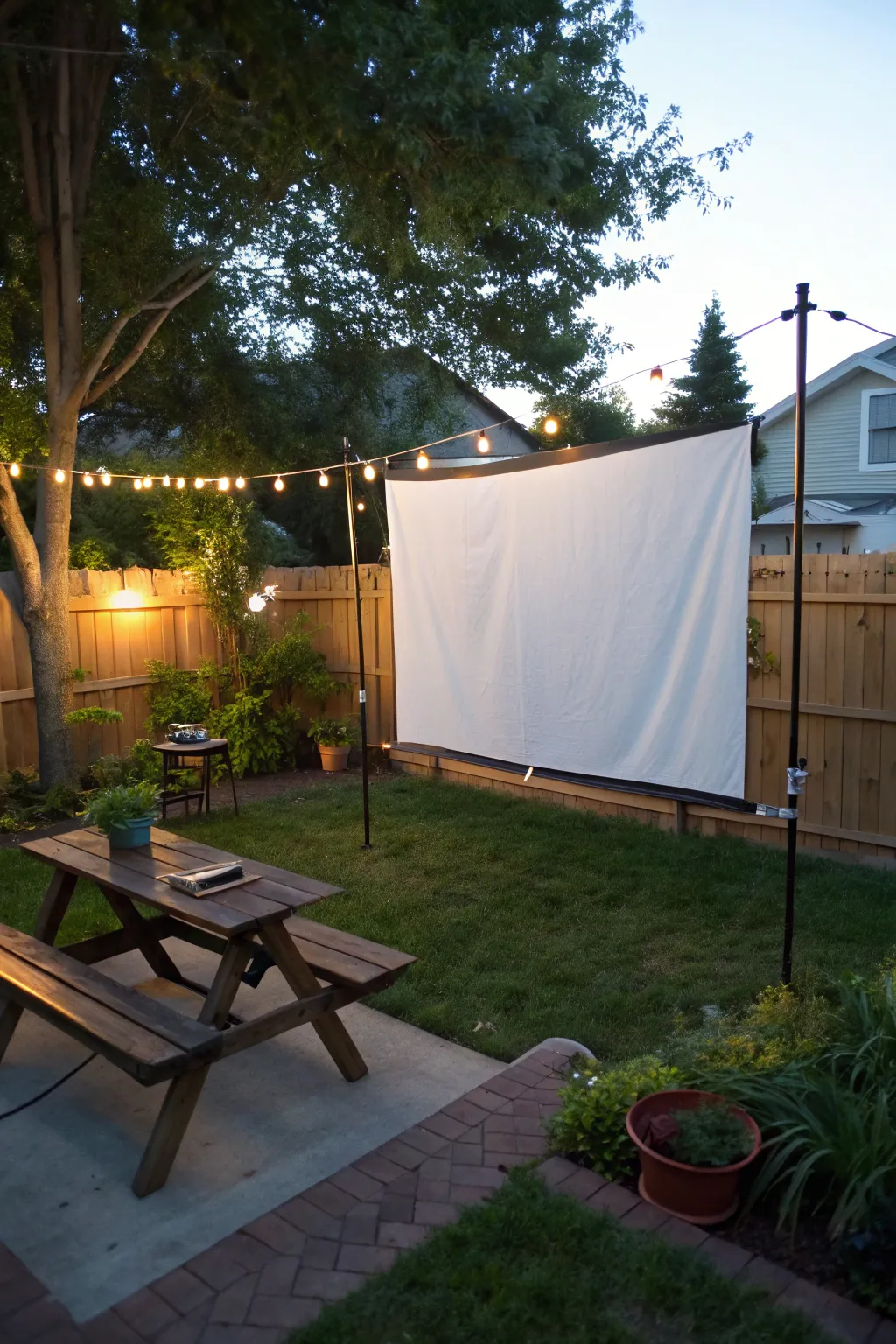
The first item on our summer fun list to be checked off? Watching a movie in our backyard.It all started when we talked a dear family member into loaning us a digital projector – the key component in pulling off a backyard movie night. Then we set a date, invited friends and picked a film. The night turned out to be such a big hit, we’re hoping it’ll be a new start-of-summer … [Read more...]
Fun Friday: Nighttime Neighborhood Walks
Fun Friday activities are quick-and-simple ways to explore nature in your own backyard. The idea: Head out the front door for a nighttime walk around the neighborhood.With my oldest in all-day kindergarten (and an afterschool program to boot), we don’t get much time to play outside during the week. Taking a walk after dinner is one of the easiest ways for our family to get … [Read more...]
Tips for Observing Nocturnal Animals
We're fascinated by all animals but there is something extra mysterious about nocturnal creatures. Kids are naturally curious about these animals that stay awake while most of us are sleeping. Here are our tips for observing nocturnal animals with kids.
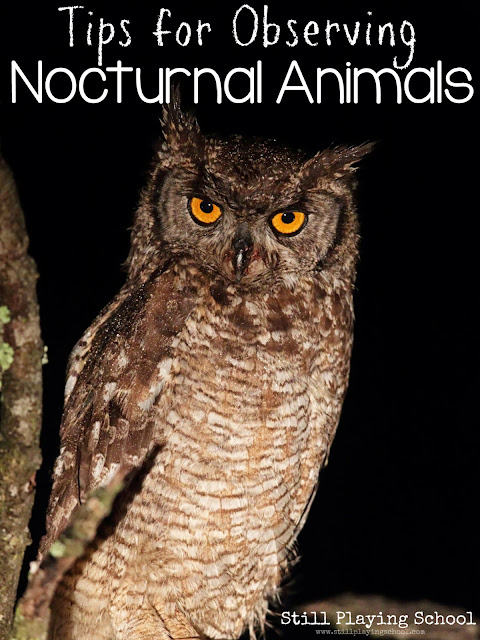
Observing nocturnal animals can be a bit tricky when they are out and about when our kids are (hopefully) asleep! What can we do to study these animals authentically in their habitats?
We are very fortunate to have a pair of great horned owls living very close to our home. While we've never seen these amazing animals first hand yet our neighbor has and that was very early while she was out walking her dog. Nocturnal animals are waking up when we're getting ready for bed and vice versa so twice a day our paths might naturally cross at dusk and dawn. Try to catch a glimpse of a nocturnal animal by going outside when the sun is setting or as it's rising (if you have an early bird kiddo like we do)!
Remember that observation isn't merely seeing an animal directly with your eyes. We identified out great horned owl by sound first comparing the calls we heard to recordings on the internet of different birds that live in our area. Months later we realized we actually were listening to a mated pair when we heard both birds calling back and forth to each other. Listening is observing and so is looking for signs that nocturnal animals leave from the night later when we're awake in the day. Look for tracks and scat to see what nighttime creatures live in your area!
While we all want to see animals up close and personal, this might not always be the best case for ourselves or the wildlife. Please don't shine bright lights in hopes of seeing nocturnal creatures. Remind children that these animals are adapted for the night life with eyes that see very well in the dark which also means they are sensitive to sudden bright lights. Taking spotlights or flashlights out at night can blind them temporarily. Other nocturnal animals like skunks have natural defenses to keep humans away! Using extreme measures to see these animals startles them out of their typical behaviors so while we momentarily see that they are there, we aren't authenticly observing them if we flood them with light. Above all, teach children to do no harm while observing nature.
Again, animals in their natural habitats are always the most ideal, but if all else fails you can often see nocturnal animals sleeping during the day at zoos and other wildlife parks. Our local zoo has a nocturnal building kept dark during the day so you can see the animals active when you are too! We love webcam observations since we can watch (and record) creatures all around the world. Check out this bat cam and this owl cam as a very examples!
Go on a Nighttime Creature Hunt
Your kids may be familiar with the animals they see around your front yard, backyard and neighborhood in the daylight. But what happens at night? Will you still see the same animals – or different ones? Time to go on a nighttime creature hunt to find out!
Before you head outdoors at night, make sure to dress for the weather so everyone stays comfortable. All you’ll need to take along on your nighttime creature hunt is a flashlight, headlamp or glow sticks.
During your nighttime creature hunt, keep an eye out for creatures large and small. Some common animals in the city include spiders, owls, moths, raccoons and opossums – plus many types of insects.
There are a couple of ways to approach your creature hunt once the sun goes down. You can:
Pick a spot to sit and listen to the sounds of the night. Try to figure out where they are coming from. Then go investigate.
Go for a walk around your yard or neighborhood. Look in corners, on tree bark and under rocks to see what you can discover.
If you don’t wind up seeing anything, that’s okay! Talk about where the animals might be – and what they might be doing.
If the kids are up for it, write about your nighttime creature hunt in a nature journal.
Go Snow Tracking
Of course, one of the truly unique and amazing opportunities of winter is snow tracking.
Sometimes it isn’t until you get out tracking in winter that you realize there are some pretty cool animals living right in your own backyard. Winter is a fantastic time to build your confidence with tracking in good substrates whether you’re a beginner or already more experienced with looking at tracks. You can have hours of fun learning to identify the signs of local squirrels, rabbits, deer, cats, dogs and their wild relatives.
Learn to identify the difference between cat and dog tracks
Find a deer trail and see how far you can follow it.
See if you can map out a complete circuit of squirrel or rabbit trails
Study the track patterns to understand local animal behavior
Learn to identify the tracks of animals in very deep snow, or partially melted tracks that obscures the clear prints.
Quest: Spot the different animals around you
Many wild mammals are tricky to spot in the US although there are some that might be a bit easier – I’m thinking about squirrels and deer if you have anywhere near you that’s a managed deer park. Other than that you might have to get sneaky and do some detective work – my animal tracking for kids post might help you there!
Another activity I love to do is bat watching. It’s actually surprisingly easy to find them and you don’t have to stay up all night either. Try sitting in your garden at dusk and keep watch. If you’re really keen, a bat detector is great, but not a must.
Here’s a guide to bat watching with kids if you fancy a go.
Watch the weather
What kid doesn’t just love to splash in puddles, create fun shadows on the pavement or fly a kite in the wind? If your kids are especially interested in the weather then making a weather diary might be a fun activity and you can add weather experiments to it all too. Perhaps measure the rainfall, get a barometer to measure the pressure or even draw the clouds.
Sleep outside
Camping out in your garden is a fun activity to do if you have an outdoor space that is suitable. If not, why not Join the RSPB’s Big Wild Sleep Out as they sometimes have activities that are organized to allow kids to join in. When you’re out there can you hear any nocturnal animals? Owls? A rustle that might be a hedgehog?
Nightwatching
You may be surprised how many animals live near your house -- but you might have to wait for nightfall to see a lot of them. Nightwatching will show you how to spot those animals that come out at night.
What You'll Need:
Flashlight
Red cellophane
Rubber band
Woods, parks, fields, and other places are often full of animals we're not aware of because they come out at night. If you are quiet and still, you can see some of these night creatures.
Go with an adult, and find a safe place in the woods where you can sit and watch. Make sure the spot is quiet and well away from any bright lights. During the daytime, you can remove sticks and rocks, so the spot will be more comfortable. You can also lay a folded blanket out.
Before going out, cover the front of a flashlight with two layers of red cellophane. Red light won't affect your night vision, but it is hard for most animals to see. Go outside and wait a few minutes for your eyes to become adjusted to the dark.
Turn on your flashlight and go to your spot. Allow yourself at least a half an hour to sit. Listen carefully for any animal noises. If you hear something, you can slowly move the beam of your flashlight toward it, but try to see it without the aid of the flashlight first.
Quests with Creatures of the Night
Learn Why Some Animals are Nocturnal?
There are fewer predators out at night. The vast majority of nocturnal animals are birds, insects, and mammals, not reptiles. A leading theory for why animals are nocturnal is that this trait evolved as a way to avoid being eaten by dinosaurs and other top predators back when mammals and birds started to expand as groups.
It’s easier to avoid detection at night. While many nocturnal animals have heightened senses of smell and hearing, it’s still a bit easier to avoid detection at night. The darkness helps both predators and prey move around a bit more stealthily. Prey animals use the cover of night to forage more safely, while predators capitalize on the same darkness to ambush prey more easily.
There are prey animals out at night. If you’re a predator who specializes in eating small mammals, there’s no better time to be outside than nighttime. Predators are generally more successful if they hunt while their prey is awake and mobile – so many predators hunt at night to match their prey’s schedule.
There’s less competition at night. Some nocturnal species likely developed this schedule as a way to reduce conflict over food sources. If everyone else in the neighborhood heads to the watering hole and the grazing field in the morning, perhaps it’s helpful for you to go during the off times.
Nighttime is cooler. Many desert animals are nocturnal for the evident reason that this helps them avoid the heat of midday. In scorching-hot parts of the world, being nocturnal is simply a good move. Water conservation is also an important aspect of avoiding the heat of the day. Moving around when it’s cool and dark avoids overheating and wasting precious water.
Many nocturnal animals are probably active at night for a combination of these reasons. Evolution is a slow process, and it’s almost impossible to say exactly which pressures caused each species to evolve in a given direction.
Special Adaptations of Nocturnal Animals
Nocturnal animals also have special adaptations to help them get around in the dark. Unlike humans, they generally don’t rely on their sight as their primary sense. Instead, they get around thanks to sensitive ears, whiskers (to sense nearby objects), and smell.
Of course, many nocturnal animals also have large eyes that are specially adapted to excel in low-light conditions. This is especially true for birds and nocturnal primates, which need to be able to see branches to land. Some animals, like cats, can see well both in daytime and at nighttime. Others, such as bushbabies and bats, have poor eyesight in the light.
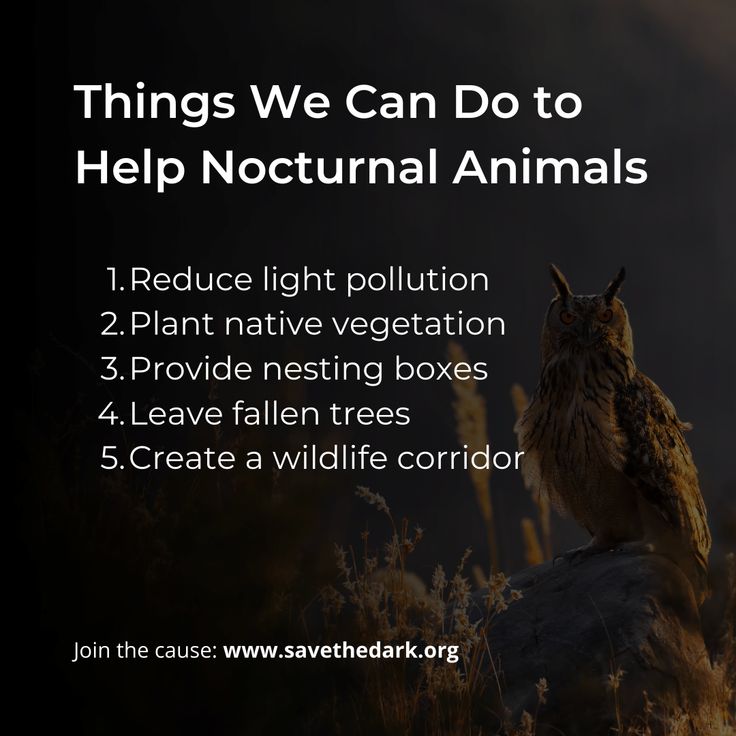
Threats to Nocturnal Animals
Light pollution is a huge threat to nocturnal animals. Lights from cities cause changes in migration patterns and can confuse animals. Light pollution is a major problem for sea turtles and nocturnal migratory birds because they use starlight as a compass.
Human activity and disturbance are also pushing some animals to become more nocturnal. Read more about that here.
Climate change is also making some areas of the world much hotter and drier than they used to be, potentially pressuring some animals to become more nocturnal or crepuscular (preferring to be active at dawn and dusk) than they are currently.
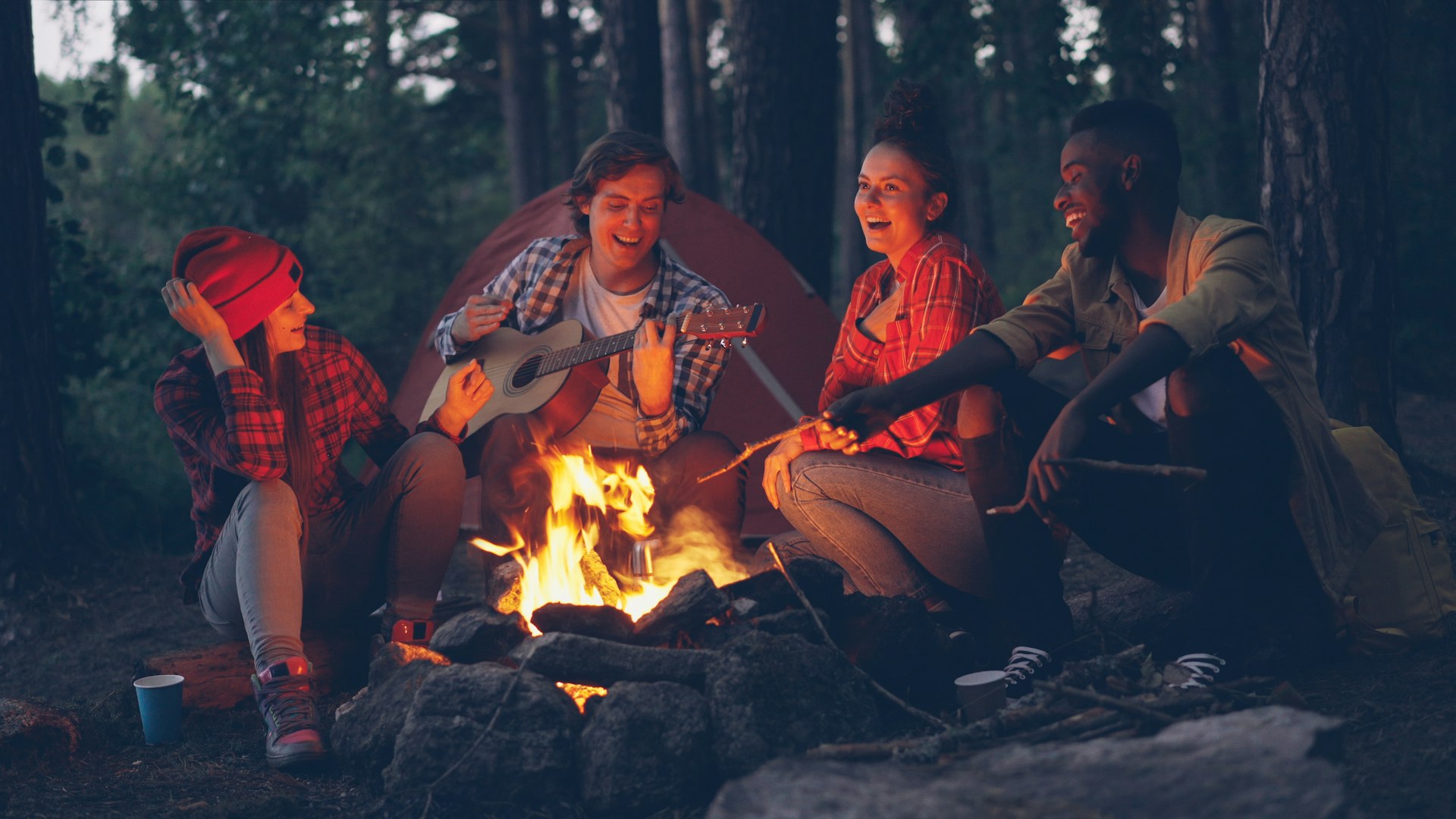
Superscript
Nature Observation For Kids
Nature observation isn’t just some boring learning exercise. In fact, it’s often better if we take a bit of a childlike attitude. When doing nature observation with kids we have to use a bit of a different approach. Children are less technical than adults, but their capacity to view the world in a sensory way is as good or better than most adults. Some kids will find it very easy to sit & watch the birds for hours on end, but others won’t.
Depending on the time of year you do your nature walk, you'll have a very different experience.
Summer
In the summer, keep a look out for moths and bats darting about overhead. Bats fly in loops and are brilliant to watch in low light.
The light nights of summer mean that you'll have to wait until a lot later for it to get dark, but dusk is often a great time for a walk, as although the animals who are active in the daytime are going to sleep, it's also the time that nocturnal animals such as hedgehogs and foxes are waking up and coming out.
You might see and hear crickets, foxes, tawny, short-eared, barn or little owls, rabbits and hedgehogs. If you live in southern England, you might even hear a nightingale during the summer months as they visit the UK at this time of year.
Autumn
As the nights turn darker and a little bit chillier, and the leaves begin to change colours and fall to the ground, autumn gives you a different world for a night time walk.
Rustling in fallen leaves could be hedgehogs, or snails working their way through the decaying matter.
Deer are often grazing at dusk in the autumn, so you stand a good chance of seeing them if you live near fields, forests or parkland.
Redwings, fieldfares, song thrushes and blackbirds come from Scandinavia and Iceland to feed on autumn berries, and often travel at night, so with good eyes you might well be able to pick some out on your walk.
Winter
As the nights get dark earlier, it's easier to fit in a walk before dinnertime. It might be colder going for a nature walk at night in winter, so you might need to wear warmer clothes and not stay outside as long.
Things you're likely to spot on a winter night include foxes, owls and possibly hedgehogs looking for food. If it has been snowing, you can sometimes see tracks in the snow which will give you an idea what you might see on your walk.
Spring
With winter on the way out and everything growing again, spring is all about new life outside.
If you live in the countryside, you'll hear baby lambs bleating, you might see pheasants in the dusk and bats start to emerge from hibernation. Even in cities, you should still be able to hear the signs of new life, like chicks tweeting.
Spring is also a good time for spotting baby badgers leaving their setts, if you're quiet enough so they don't hear you – badgers have great ears.
Learn about how owls see, hear, and hoot.
What You Need
Binoculars
Flashlight
A squeaky toy
What You Do
Learn About Owls’ Eyesight
Owls have big eyes that help them see at night when there is little light. Since their eyes are so much bigger, owls can see in the dark much better than people can.
To demonstrate this fact, head outside some evening and name the things you can see. Then find a particularly dark corner away from electric lights. What can you see now? (The outline of a tree; stars, the silhouette of a bird or bat flying across the sky?)
Next, look through a pair of binoculars. Binoculars help bring in more light so it’s easier to see. How much more detail can you see? Even binoculars can’t make you see as well as an owl. Their eyes take in 100 times more light than ours!
Learn About Owl Sounds
Many owls hoot, but others screech, snort, and hiss. Practice your owl talk by listening to owl sounds at owlpages.com/sounds.
Then go outside and give a hoot or two. If there’s an owl in your neighborhood, it might answer your call.
Learn About Owls’ Hearing
Owls use their great hearing to hunt at night. Their ears detect the quietest rustle or crunch of leaves and grass. Those noises tell the owl a mouse or worm dinner is near.
While outside, close your eyes and listen as someone presses a squeaky toy and tosses it a few feet away. Try to figure out which direction the sound came from in order to find the toy. The flashlight is a fine backup, if need be. Shine the light up in the trees, maybe there’s an owl up there!
Want to look for owls? Head out with family and friends and follow these owl prowl tips.
What You Need
bird field guide
field journal/notebook
What You Do
Whooo’s There?
The best way to track down owls is with your ears. The best time to listen for them, of course, is at night. Check a bird field guide to find out which owls live in your area, where to look for them, and what sounds they make. Also check out online guides:
owlinstitute.orgallaboutbirds.orgNight Noise
In the evening, listen for owls hooting, tooting, whistling, or trilling. Late winter and early spring are usually the best times to hear owls calling for mates. The hoots of a great horned owl sound like this: hoo-hoo-HOO hoooo hooo. A barred owl seems to ask, “Who cooks for you? Who cooks for you all?”Give a Hoot
If you get lucky and hear an owl, try to imitate the call and hoot back. Sometimes you can start a conversation!Eye Spy
Return during the day to places where you heard owls calling. Look for whitewash, owl pellets, and owl feathers. If you find some, check carefully up in the trees. There might be an owl tucked next to the trunk or perched on a limb.Stick Figures
Keep track of trees in the area that have stick nests in them. Go back to those trees in late spring to see if an owl mom is using any of them. Take binoculars so you don’t have to get so close that you disturb her.Take Note
Keep owl-prowling notes in a field journal. Sketch a map of any owl hot spot you find and keep track of what you discover there over time. Use your field notes again next year to see if owls start a new family in the same area.
Don’t hear any owls? Don’t worry. Try again another time or in another place. Or just enjoy all the other night sounds you hear!
Ranger Rick Zoobooks Animal All-stars Activities
Ranger Rick Zoobooks Animal All-stars …
How To Find Owls:
7 easy steps to see owls anytime you want!
Have you ever seen an owl up close in the wild?
Owls are some of the coolest birds on the planet. They’re known for being incredibly stealthy nocturnal predators with highly efficient hunting skills.
Yet unlike a lot of other sneaky predators we hear about in storybooks & nature shows, owls are actually surprisingly easy to find in real life (when you take the right approach).
In my personal experience, the easiest way to find owls is by following alarm calls made by songbirds around dawn or dusk.
It simply requires knowing a few basics about owls & how songbirds react to owls, combined with searching in the right location, at the right time of day.
So today I’m going to share everything required for you to actually do this successfully in your local area.
Most people think seeing owls is a random occurrence, but when you take the right approach, it is actually possible to find owls pretty much anytime you want.
So let’s break this entire process down into 7 steps that will help you find owls in your local area!
1. Learn About Your Local Owl Species
If you want to be able to find owls, it’s helpful to know what types of owls are actually living in your area.
This is useful because owls come in various different size categories with behaviors that adapt to specific habitat types.
We need to answer two basic questions about your local owls:
Does your area have large owls or small owls or both?
What’s the habitat type where owls in your area live? (Deep forest vs open farmlands vs desert, etc.)
Luckily, most places only have a few different types of owls, so this is just a matter of knowing which ones live in your bio-region.
For example:
If you’re in farmland with lots of open fields dotted with tree islands then you’re probably looking for something like a Great Horned Owl.
If your area is more forested with miles of trees covering the landscape, you’re more likely to find large forest owls like Barred Owls, or small forest owls like Pygmy Owls.
There are also small desert owls like Burrowing Owls, and owls who live in the suburbs right around people like Screech Owls.
These differences in size and habitat all play into knowing where to look when you actually get outside to track and find owls.
You can easily find out what kind of owls live in your area by checking local bird resources like field guides or local government species lists.
A quick google search for “owls + your location” should bring up everything you need for this step.
In a later step, I’ll share an amazing resource to help you identify not only what types of owls are most commonly seen in your area, but also the exact locations where they’ve been positively identified.
2. Find Owl Habitat Near You
The next step is to find out where owls are most likely to be living in your local area – Where should you actually go to find owls near you?
Luckily, owls occupy a huge variety of ecosystems. They can survive in deep forests, meadows and farmlands, even in urban & suburban backyards.
This is great news for locating owls because it usually means you never have to go far in order to find active owl territories.
However, the tricky part is that owls are also predatory birds, which means they do have fairly large territories.
This is a VERY important thing to account for on your quest for owls – you need to find an area that has enough range for owls to hunt a variety of small prey animals like voles, squirrels, snakes & even large insects.
In my experience, the easiest way to find these places is by looking at google maps in the satellite view.
Check for local parks, nature reserves, forests, agricultural areas, beaches, or anywhere that has a diversity of trees & plants providing habitat for owl food.
Study these natural areas on the map and pay attention to the overall size of the area it covers.
Pretty much any decent sized natural area that isn’t completely choked off with human development will have owls, especially if it includes a good mixture of trees & open landscape.
Simply make a list of several potential owl spots near you, and we’ll be investigating these places more closely in an upcoming step.
3. Use eBird To Find Actual Owl Sightings
If you get stuck on looking for owl habitat, a great trick is to go over to eBird.org and explore the species maps for owl species in your area.
You might have to create an account with eBird to see some of this data, but it’s pretty amazing how much information is available there.
The recorded data will show you exactly where owls have already been seen nearby.
This can help you identify trends that tell you which species are most common in your area, and where they’ve actually been spotted.
When you find reports of owl sightings in your area, it’s worthwhile to go back over to google maps and use the satellite view again to study the vegetative patterns associated with these sightings.
Focus on big picture patterns, and you’ll be able to get a sense for what types of ecology support the highest owl populations in your area.
Pay attention to where owl sightings are most common in your area:
Are they all in the middle of a big forest?
Are they in farmlands?
Are they mixed landscapes?
In the future, we can use this information to know whether you should be looking in deep forest habitats or old farmlands, or even in city parks.
4. Search For Owls At Dawn Or Dusk
The next important question to ask is – when is the best time to see owls?
It’s important to search for owls at the right time of day if you want to maximize your results.
While it is possible to find owls at any time of day or night, usually you’ll have the best results at dawn and dusk.
This is because it’s light enough for you to navigate the forest and see what’s happening around you, but dark enough that owls are still actively hunting & doing interesting behaviors.
Owls are mostly nocturnal, but the transition between light and dark holds a special window of opportunity when owl activity overlaps with animals that are mostly active during the day. (see also – where do birds go at night?)
This is a time when songbirds are most likely to be directing alarm calls towards owls, which can be heard from very long distances & tell you exactly where the owl is located (we’ll discuss this next).
I would also say that spring & summer are usually easier seasons to find owls than autumn & winter. This is because owls are very actively nesting & hunting to feed the young.
Although winter can be a great time of year to hear owls hooting through the starry nights, which could be your best bet of finding owls at night.
5. Learn What Bird Alarms Sound Like For Owls
By far, the most reliable way to find owls in any habitat is by following the alarm calls made by songbirds.
Many people don’t realize that birds make a lot of noise when owls are perched in a tree. This is sometimes referred to as mobbing, and it’s a very common behavior when owls are close by.
These alarm calls are often quite loud and can be heard from incredibly long distances, especially when made by noisy birds like robins or crows.
Here’s a cool example of just how intense these alarm calls can be when made by a group of crows:
As you can see, the birds will all gather around an owl and make loud repetitive calls to scold and annoy the owl.
These alarm behaviors are so reliable that with just a few hours in the evening, you can become extremely skilled at finding owls pretty much anytime you choose.
I tested this method when I was living in the forest near Seattle and was able to locate 4 different types of owls in a single day in late spring… a Barred Owl, a Pygmy Owl, a Barn Owl and a Saw-Whet Owl.
The American Robin is one of the best songbirds for locating large owls like a Barred Owl or a Barn Owl.
Their voices travel a very long distance, which means you a greatly increased chance of hearing their alarms even in a massive forest.
Without the alarm calls, it’s like searching for a needle in a haystack.
Here’s a video I made of some robins that were alarming at a Barred Owl:
The important thing to notice in this recording is there are multiple birds alarming simultaneously together.
When birds make alarm calls in this pattern, it creates a syncopated rhythm that sounds like they’re trying to talk over each other.
This is a very consistent feature of alarms that are given for owls, especially when the alarm continues for a long period of time without moving.
Other birds that frequently alarm at owls include Chickadees, Northern Flickers, Sparrows, Juncos & Vireos… pretty much any songbird will do it though.
6. Make Sure You Can Explore Off Trail
While it is possible to find owls in that perfect spot right next to a trail, most of the time, you’re going to have to go off trail in order to get close enough.
This is because you need to listen and investigate the possible sources of alarm calls that will be happening in some distant corner of the landscape.
If you start running into fences & no trespassing signs, it’s going to greatly limit your ability to investigate the action.
I can’t tell you how many times I heard obvious mobbing behavior happening in a neighbor’s backyard where I simply couldn’t access the spot to check things out.
This goes back to step 2: Owls have large territories so you need to go somewhere you can really cover distance and follow those alarm calls.
Look for wilderness areas where you can go off trail, old forest roads or a big park somewhere. Google satellite imagery really comes in handy here.
7. Approach With Care & Respect
As with all things in nature, if you decide to go find some owls, please do it in a respectful way. It’s important to remember these are living beings who exist in life or death survival situations every day.When we approach with care & respect, owls can inspire incredible joy and reverence that brings many hours of learning & entertainment. My personal experience with finding hundreds of different owls using these methods is they are extremely tolerant of people.
I’ve never had an owl show any kind of upset at me, even when I’m close to their nests… but I have heard stories of people being swooped by large owls if you push too hard. In general, you just want to give as much distance as possible to not affect their emotional state. If an owl is relaxed, sleeping, or hunting, it’s okay to move a bit closer and get a nice view, but if they start to show signs of stress or frustration, you should back off.
Learn to move quietly & with sensitivity so you’re not putting out unnecessary negative vibes. This is especially true if you consistently cause owls to fly away from you.
Moving respectfully will help to communicate trust & safety with your body language. With practice and repetition, owls will become more and more comfortable having you around.
Follow these 7 steps and you’ll be amazed how easy it is to find owls in your own local parks & wild spaces!
For a simplified cheat sheet, check out the bonus infographic with some key points to remember while searching for owls:
Have fun out there!
1. Always remember that animals tend to be most active at dawn & dusk. If you usually go into the woods at the same time every day… you might have better luck by switching to a different time.
Try getting out there an hour earlier, or an hour later. You might find that your adventures align more with times of heightened wildlife activity.
2. Pay attention to your own level of awareness & disturbance. The faster you move… the less presence you have and the more noise you make.
Remember to slow down your movement and get into your senses. Use your eyes and ears consciously. The best plan is often to quietly stop and sit down somewhere with a view. Learn how to stalk animals.
3. Animals tend to be most concentrated at points of high ecosystemic diversity. Look for the points in your landscape that have the widest variety of plants, trees, & habitat types.
An edge habitat is the place where forest meets field, or along the edges of water. These are places where animals congregate to take advantage of plant diversity.
Quest: Let’s go on a bat walk!
Bats are really mysterious creatures, not helped by tales of vampires and images in movies. Going on a bat walk can bring you much closer to these animals and help you learn lots about them.
Finding local bat walks
Quite often you’ll find that local nature groups or bat conservationists will run bat walks. If they do it’s a great introduction and can allow you to have a go of or at least see some bat detectors up close.
You’ll find that they run in the summer months, as bats hibernate through the winter and generally start at dusk. We found plenty by just googling local events and they all happily took children too.
Check out the Bat Conservation Trust to see if there are any events near to you – they also have some good pages with info about bats to learn more about what we have in the UK.
Go on your own bat walk
Of course you don’t have to go on an organized walk and it’s quite easy enough to go for a walk at dusk and see if you can spot some bats.
I find dusk the best time as there are lots of insects out that the bats eat and you can still see quite well. Sometimes it takes a while to get the timing right for them starting to come out, but once you do spot one it’s quite a sight. You can walk along places where you think bats will be – along side a pond or at the edge of a wood might be a good place to start, or even just outside your house in the garden. You don’t have to walk if you don’t want to – I bet that you’ll find lots just coming from local houses!
If you find some, take note of their flight paths. Different species of bats have different ways of flying and it’s one way of figuring out what’s around. Getting an illustrated bat guide like this one is a good idea to help identify what you see.
If you’d like to get more serious and get yourself a bat detector I can really recommend them. Unfortunately they’re not the cheapest bits of equipment, but if you go camping a lot or just have a real interest in bats, or your kids do, it can bring a whole new perspective to finding them.
This is the bat detector that we got. It’s a Magenta Bat 4 detector and is probably the cheapest reliable detector you can get. There are much more advanced ones with digital screens, but this one worked great for us. We’ve taken it camping in the UK, watched bats by the river in France and at home too! Because it picks up the echo location sounds as ‘pips’ on the detector it meant that we knew they were around and straining our eyes to find them was worthwhile!
You can get the detector from Amazon and see the latest price here.
Help out by doing a survey
The Bat Conservation Society also invite people to do a Sunrise and Sunset survey to help them get to know about the bats around the country. I think getting kids involved with these surveys are a great way to encourage them to learn about and get involved with nature more. The survey runs in the summer months of June, July and August, so still time for this year, and you can find out more information here.
